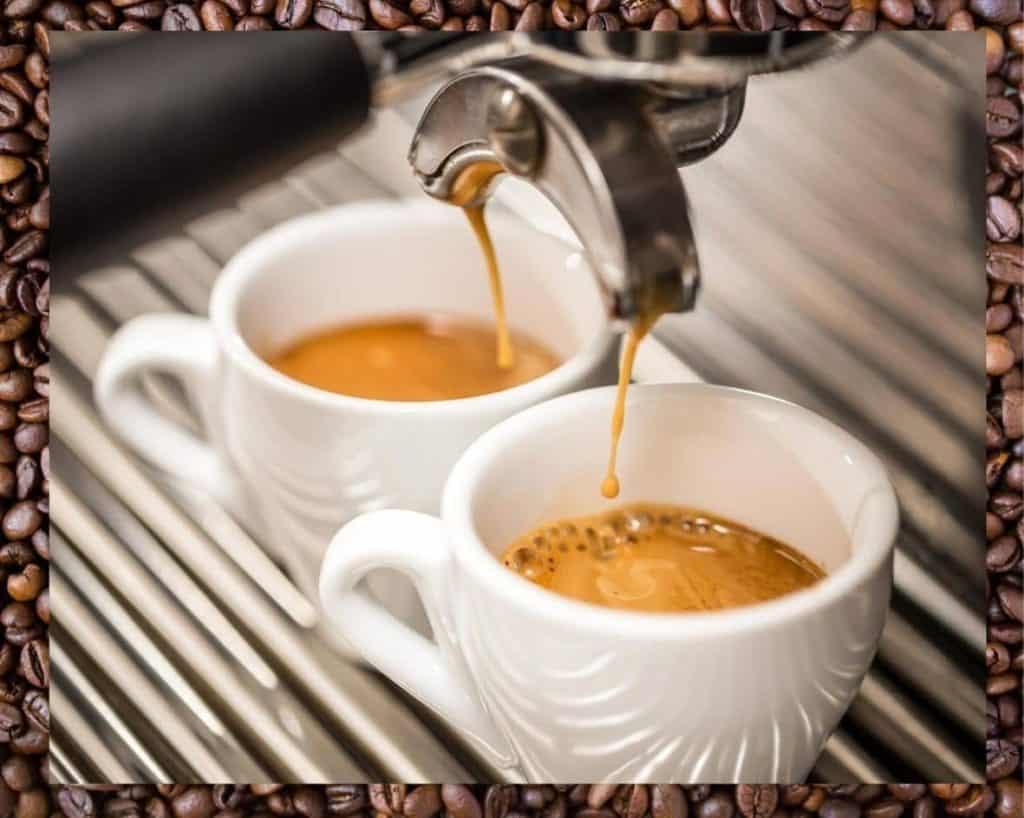
This is a question many people ask themselves when starting to learn about coffee. And it is completely natural, for it can be confusing to see in the market that there are beans labeled as “espresso beans” and coffee shops that have their “espresso blends”.
All this can in turn lead to thinking that for making espresso you need a certain type of coffee bean. After searching and testing I have come to this conclusion:
You can use regular coffee beans for making an espresso coffee, at the end, it comes to personal preference. Espresso refers to the brewing method and not to a certain type of coffee beans. However, coffee beans labeled as “espresso beans” may have a darker roast level because it eases the extraction of coffee solids and balances the perceived acidity of espresso drinks.
Sounds too complicated? It’s not so much, please follow along to explain in more detail this question as well as others related to espresso coffee.
Espresso brewing method
Let’s first discuss what espresso is.
Espresso is a brewing method that consists of passing near-boiling water, at high pressure, through a bed of finely ground compressed coffee. The method was born to aid in the necessity of obtaining a well extracted but very strong coffee.
See, because espresso drinks are so strong, meaning they have a lot of coffee in relation to the amount of water, about 1 to 1, or 1 to 2 coffee to water ratio, then the time that the coffee is in contact with water is little.
Let’s compare this with a coffee prepared by a pour-over brewing method, where you may have fifteen or eighteen times as much water as coffee. The time that each individual grain of coffee is in contact with water is larger, and hence extraction is facilitated.
With an espresso coffee, the contrary occurs. With so little water per grain of coffee, the time each grain is in contact with water is so little, that it is easy to get an under-extracted coffee. This is the situation that espresso machines were able to solve, by applying pressure to the system it forces the water through the coffee bed accomplishing the extraction.
Espresso drinks are usually made in a time frame of 20 to 30 seconds. This short amount of time, even with the added pressure of the machine, may result in coffee with a high level of acidity.
See, the acids are the first coffee solids to dissolve, followed by the sugar, and finally the more complex compounds like the caramelized sugars and the Maillard reaction derivatives. These last compounds are produced during the roasting process and are the result of complex chemical reactions between natural substances in the beans aided by the heat of the roasting process.
So, if the espresso method is short, and therefore tends to extract less of the more complex and bitter substances of the coffee, then a darker roast may aid in balancing the cup because it will have more of these complex substances by default. This way, a possibly acid cup of coffee may be balanced by bitter substances from the Maillard reaction during roasting.
Also, when the coffee has a darker roast the structure is more brittle because of a more extended period of time in contact with heat. This more brittle structure aids in the soluble coffee solid extraction of the beans.
However, having said this, it does not mean that you can not make an espresso drink with beans that are light or medium roasted. At the end, it comes down to personal preference, the baristas preference, and the skill to balance other factors that make a great cup of coffee.
In our coffee shop, for example, one of the espresso drinks we prefer, and our customers have expressed satisfaction over, is an espresso drink prepared with a medium roasted honey coffee bean. The barista has managed to adjust the grind size and time to produce a really nice cup of coffee. The color of the crema is not as dark as it would be from a dark roast, but as said before, it is very enjoyable.
So these are the reasons why you can make espresso drink with any type of coffee and you do not need a special type of coffee beans.
On the other hand, on a specialty coffee shop, you may see what is called an espresso blend. This means that they have managed to combine a certain type of coffee beans, and have adjusted the grind level, amount of liquid, temperature, and other factors of the espresso machine to produce a good quality cup of coffee.
There is science and art behind this process. But again, it does not mean that they can only make an espresso drink using this blend, it is just the one they have selected and mastered.
Okay so now that we have covered this subject, let’s talk about other common questions surrounding coffee for espresso.
Can you use beans that are labeled as espresso coffee, to prepare coffee using other brewing methods?
You can use coffee beans labeled as espresso blend or espresso coffee beans to prepare coffee in other types of methods like a filter or pour-over coffee. It all comes down to personal preference.
For the espresso brewing method, do you need more finely ground coffee beans?
You do a more finely ground coffee for producing an espresso coffee drink compared to other type of brewint methods like pour over or filter coffee. Because the coffee is in contact with water for such a little time, you need a finer particle to enhance the coffee extraction.
Grind size is probably the most valuable variable used to calibrate and obtain a well-balanced cup of coffee using an espresso machine. Baristas regulate the amount of time that the water is in contact with coffee by increasing or decreasing the grind size.
The finer the coffee is, the more time it will take the water to pass through the metal filter. The coarser the coffee is, the lesser time it will take. Therefore, baristas adjust grind size to obtain more or less extraction.
When you have a fine particle, and you have compacted the coffee bed by using a tamper, then the water will have a tougher time passing through the bed. As Harmond (2014) mentions, it is like passing water through sand versus pebbles. It will be far easier and faster to pass water through pebbles as the liquid will sneak its way through the empty channels between the pebbles.
The other way around also works, if you need to have a faster brewing time then making the coffee coarser is the way to go.
Is crema an indicator of a good espresso?
A thick or dark crema is not necessarily an indicator of a good espresso. You can have a good crema, but a bad flavor for the coffee.
According to Harmond, J (2014), a good crema is indicative of how long ago it was roasted.
When coffee is roasted carbon dioxide is developed. The carbon dioxide starts to dissipate after roasted, doing so fast the first few days, and then at a slower pace.
When the coffee is brewed with the espresso machine the carbon dioxide is trapped in the liquid of the coffee, aided by the higher pressure. When gases are pressurized they have a lower volume. However, when the liquid drips towards the cup, the pressure is lost and the gas travels to the surface of the coffee thus forming the crema.
How fresh coffee is, or how long ago it has been roasted, does not necessarily mean the coffee is of good quality; Therefore a thick crema has no relation as well.
The second thing that indicates the crema is how strong the coffee is. The crema will be darker because of two combining reasons: as a signal of a good amount of extracted coffee solids, and therefore a strong coffee. But also, as a sign of a darker roast. See, the crema is the same coffee but with bubbles of the carbon dioxide, which make the color lighter. However, it is still a reflection of the coffee, and if the liquid is darker so will the crema be.
In our coffee shop, we used a medium roasted coffee for our espressos. However, because the roast is not dark it does not have a dark color.
Finally, if the coffee was extracted correctly, and therefore has an even good crema, it also means that the espresso was done correctly controlling all other variables such as time of brewing and water temperature. See, a bad crema, like an uneven one, or one that dissipates fast, can be also a signal that there are other factors that were not adequately controlled.
However, all these signals do not necessarily mean that a thick crema and a darker one is signal of a good coffee. It does mean the espresso was probably done correctly and the coffee was recently roasted. It can not say if the coffee is of good or bad quality or if the roasting was done correctly.
References
Hoffman, James (2014). The World Atlas of Coffee: From Beans to Brewing — Coffees Explored, Explained and Enjoyed. 2nd edition.
Moldvaer, Annette (2014). Coffee Obsession: More Than 100 Tools and Techniques with Inspirational Projects to Make.
